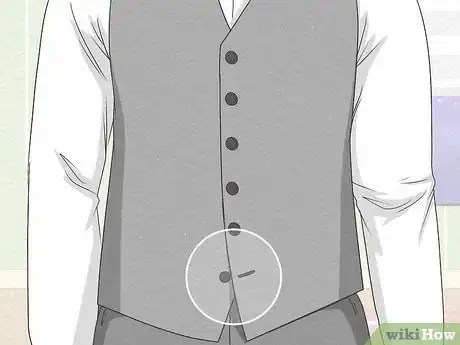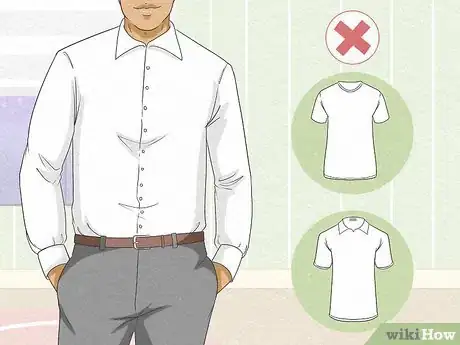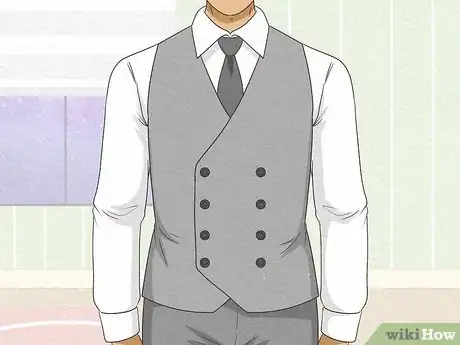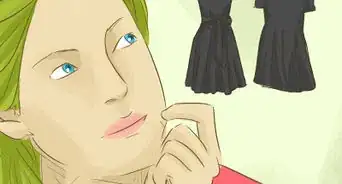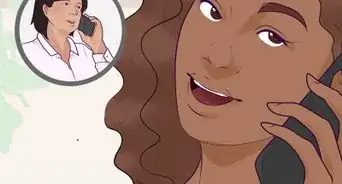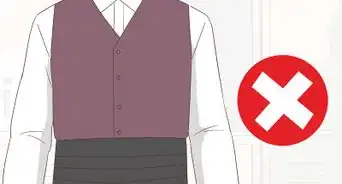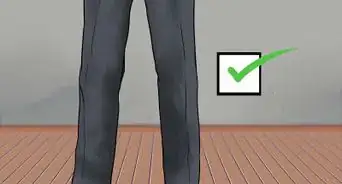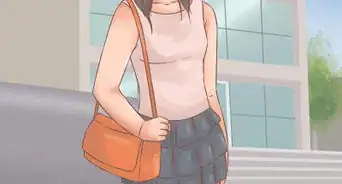This article was co-authored by Carla Nelson. Carla Nelson is a Personal Stylist and the Founder of A Creative Cliché. With more than seven years of experience, she specializes in empowering entrepreneurs and executives through personal styling and shopping, image consulting, and wardrobe edits. She has worked with many brands, including Woman’s World Magazine and L.L. Bean. Carla holds a Bachelor’s degree from Simmons University.
There are 13 references cited in this article, which can be found at the bottom of the page.
This article has been viewed 151,882 times.
Wearing a waistcoat, or vest, is a simple way to add an elegant and sophisticated touch to your suit. And by adjusting the cinch on the back, you can ensure that it fits you perfectly! It’s quite simple to do, and we even offer you a little trick to tie fabrics that are more prone to slipping and coming undone.
Steps
Adjusting the Cinch
-
1Try on your vest to see how much you’ll need to adjust the cinch. The waistcoat is the most form-fitting part of a suit, and it looks best when it lays snug against your body. When you try it on, look at how much room there is between your body and the vest. Plan to tighten the cinch enough to leave 1 in (2.5 cm) of breathing room.[1]
- Most waistcoats have an adjustable cinch in the back, but some have buttons. If your vest has buttons, all you can do is fasten them to adjust the fit of the vest.[2]
-
2Lay the vest facedown on a flat surface so the belt is facing up. Looking at the belt, locate the right side, which is a single strip of fabric. Find the left side, which is the other strip of fabric with a buckle, or cinch, attached to the end.[3]
- If the two sides of the belt are already attached, all you have to do is pull the loose end to tighten the belt or slide the cinch to loosen it.
Advertisement -
3Slide the right side of the belt up through the righthand side of the buckle. When you look at the buckle, pay attention to the metal bar in the center. This bar separates the cinch into two parts: the left side and the right side.[4]
- The belt's righthand side should always stay on top of the lefthand side.
-
4Pull the right side of the belt down through the left side of the buckle. Check that the loose end of the right side of the belt is pointing toward the left.[5]
- Do your best to keep both sides of the belt as flat and straight as possible.
-
5Tug on the loose end of the belt to tighten the cinch. Now that the belt is fastened, you can make adjustments to how tight it is. If you need to, try on the vest to check how the fit feels.[6]
-
6Slide the loose end up underneath the belt to start making a knot. Leave the vest lying facedown. Take the end of the belt and tuck it underneath the body of the belt. Position the end so that its tip is pointing up toward the vest’s shoulders.[9]
- If you’re going to tie a knot, consider trying on the vest a second time to double-check that the fit is right. It’s easier to make adjustments before the knot is in place.
-
7Pull the loose end down through the loop you made to secure the knot. You won’t tie a bow or make a double knot for this process. Instead, just pull the end of the fabric through the gap between the belt and the end of the belt, just before the cinch. Tug it tight to make sure it stays in place.[10]
- This technique is especially helpful for slipperier fabrics, like silk, which are more likely to slide out of the cinch without a little extra reinforcement.
Styling and Fit
-
1Leave the bottom button of your vest undone. It’s the unspoken (and sometimes spoken) rule of waistcoats—the bottom button should never be done up. It gives you a little extra breathing room when you’re moving around, and leaving it undone makes it look like you know what you’re doing when it comes to style.[11]
- The vest's top button is optional, but all the rest should always be fastened.
-
2Choose a waistcoat that is long enough to cover your belt. Depending on the cut of your vest, you might see some of your shirt in the back or on the sides. But, the fabric in the front between your vest and belt should never be visible.[12]
- Some experts say that the top 1 in (2.5 cm) of your waistband should be covered, while others say that your vest should cover your entire belt. Decide which look you like best and wear it with confidence!
- Don’t forget that you can always get your waistcoat tailored if you need to. If your vests are regularly too short but fit well around your torso, purchase the next size up and let a tailor take the vest in so that it fits perfectly.
-
3Check that the shoulders of your vest lie flat against your body. Also, the shoulders of the vest go underneath your collar if they reach over that far. If the shoulders don’t lie flat, the vest is most likely too large and needs to be taken in by a tailor.[13]
- If the shoulders of your vest don’t fit well, there’s a good chance the rest of your vest might not fit right, too.
-
4Tuck in a well-fitting button-up shirt underneath your vest. Make sure to tuck it in as tightly and smoothly as possible. This helps the vest lay nicely and prevents your shirt from ballooning out between the vest and your pants. [14]
- Avoid wearing T-shirts, sweaters, or polos underneath your vest (and you should never go bare-chested underneath it, either).
-
5Opt for a double-breasted vest when you want to add visual contrast. A double-breasted vest has 2 columns of buttons and adds a nice flair of style to your outfit. This is an especially good choice when you’ll be taking off your suit jacket often.[15]
- If you do wear a double-breasted waistcoat, make sure your suit jacket is single-breasted. Double on double tends to look overdone and clunky.
-
6Wear your waistcoat as part of a three-piece suit. Some people like to get a little more casual and pair a vest with jeans or trousers, but it’ll always look best when worn as a set. You can absolutely take your jacket off if you need to, but always bring it along to create a cohesive fashion statement.[16]
- For a classic styling of a waistcoat without a suit jacket, wear the waistcoat with a matching pair of suit trousers. This will create a sense of uniformity.
- If you’re committed to making your waistcoat part of your everyday-wardrobe, choose a knitted one. It’s a nice blend that looks more casual and is easily paired with trousers and a blazer, even if they don’t match perfectly.
References
- ↑ https://youtu.be/Ux34a42oK6g?t=121
- ↑ https://welldresseddad.com/2014/01/10/the-deeply-critical-situation-regarding-waistcoat-buckles/
- ↑ https://youtu.be/aOaJPnGf3MY?t=26
- ↑ https://youtu.be/5E3VJXBl9OE?t=67
- ↑ https://youtu.be/5E3VJXBl9OE?t=71
- ↑ https://youtu.be/aOaJPnGf3MY?t=76
- ↑ https://youtu.be/Ux34a42oK6g?t=107
- ↑ https://youtu.be/Ux34a42oK6g?t=115
- ↑ https://youtu.be/5E3VJXBl9OE?t=86
- ↑ https://youtu.be/5E3VJXBl9OE?t=92
- ↑ https://www.realmenrealstyle.com/mans-guide-vests/
- ↑ https://www.realmenrealstyle.com/mans-guide-vests/
- ↑ https://www.realmenrealstyle.com/mans-guide-vests/
- ↑ https://www.gq-magazine.co.uk/article/how-to-wear-a-waistcoat
- ↑ https://www.gq-magazine.co.uk/article/how-to-wear-a-waistcoat
- ↑ https://www.gq-magazine.co.uk/article/how-to-wear-a-waistcoat
- ↑ https://www.esquire.com/style/mens-fashion/advice/a40438/ask-a-clean-person-wrinkled-jacket/







